
Fundamentals
The Lipid Layer, at its foundational meaning, serves as a delicate yet powerful veil, an invisible guardian that swathes each strand of hair, safeguarding its inner vitality. This protective sheath, composed of various lipid molecules, plays a fundamental role in maintaining the hair’s integrity, its inherent moisture, and its resilient character. It is the hair’s first line of defense, a silent sentinel against the world’s ceaseless demands, from environmental shifts to the touch of human hands. Understanding this layer begins with recognizing its dual nature ❉ a blend of lipids crafted within the hair fiber itself and those generously provided by the scalp’s sebaceous glands.
For textured hair, particularly within the vast and varied landscapes of Black and mixed-race hair experiences, the Lipid Layer carries an especially profound significance. The intricate curvatures and unique structural characteristics of coily, kinky, and curly strands present distinct needs for this protective barrier. Historically, ancestral wisdom intuitively recognized the importance of this outer defense, even without the language of modern science.
Practices passed down through generations, often involving rich oils and butters, were indeed tending to this very layer, preserving the hair’s precious moisture and strength. This deep, inherited knowledge, rooted in the very soil of cultural practice, laid the groundwork for contemporary understanding.

The Hair’s Outer Garment ❉ A First Look
Imagine each hair strand as a tiny, living filament, reaching from the scalp towards the sky. The outermost covering of this filament, known as the Cuticle, comprises overlapping, flattened cells, much like shingles on a roof. Resting upon and woven within these cuticle cells is the Lipid Layer.
This layer is not merely a superficial coating; it is an integral component, providing hydrophobicity, meaning a natural resistance to water, which helps prevent excessive water absorption and subsequent moisture loss. Without this shield, hair would be far more susceptible to damage, dryness, and breakage, particularly for hair types already predisposed to these challenges due to their unique morphology.
The lipids themselves are a diverse family of organic compounds, including fatty acids, ceramides, and cholesterol. These molecules arrange themselves in a structured manner, forming a barrier that repels external aggressors while locking in vital internal moisture. This barrier function is crucial for the hair’s overall health and appearance, contributing to its shine, smoothness, and tensile strength.
The Lipid Layer acts as the hair’s ancestral shield, preserving its inherent moisture and strength against the world’s demands.

Echoes from the Source ❉ Ancestral Understanding
Long before microscopes revealed the intricate cellular structures of hair, communities across Africa and the diaspora understood the protective qualities of natural emollients. The application of plant-derived oils and butters was not simply for adornment; it was a ritual of preservation. These practices, deeply embedded in daily life and ceremonial rites, were a testament to an intuitive grasp of the Lipid Layer’s importance. The rich textures of shea butter, the nourishing qualities of coconut oil, and the protective essence of various botanical infusions served as direct, tangible interventions that supported the hair’s outer defenses, enhancing its resilience in diverse climates.
Consider the ancient Egyptian use of castor oil and moringa oil, not only for cosmetic appeal but for their documented protective qualities against the harsh desert sun. These historical applications speak to a collective wisdom that observed, experimented, and codified practices that inadvertently fortified the hair’s natural lipid barrier. The enduring legacy of these traditional methods continues to shape modern textured hair care, reminding us that the wisdom of the past often aligns with contemporary scientific findings.
- Shea Butter ❉ A revered emollient from the karite tree, traditionally used across West Africa for its moisturizing and protective qualities, implicitly supporting the hair’s outer lipid defenses.
- Coconut Oil ❉ A staple in many tropical regions, its smaller molecular structure allowed for deeper penetration, offering internal and external fortification to hair strands.
- Palm Oil ❉ Utilized in various African communities, it provided rich conditioning and a protective coating, contributing to the hair’s sheen and manageability.
- Chebe Powder ❉ Originating from Chad, this herbal mixture, often combined with oils, was historically applied to hair to reduce breakage and promote length retention, indicating an ancestral understanding of sealing the hair cuticle.
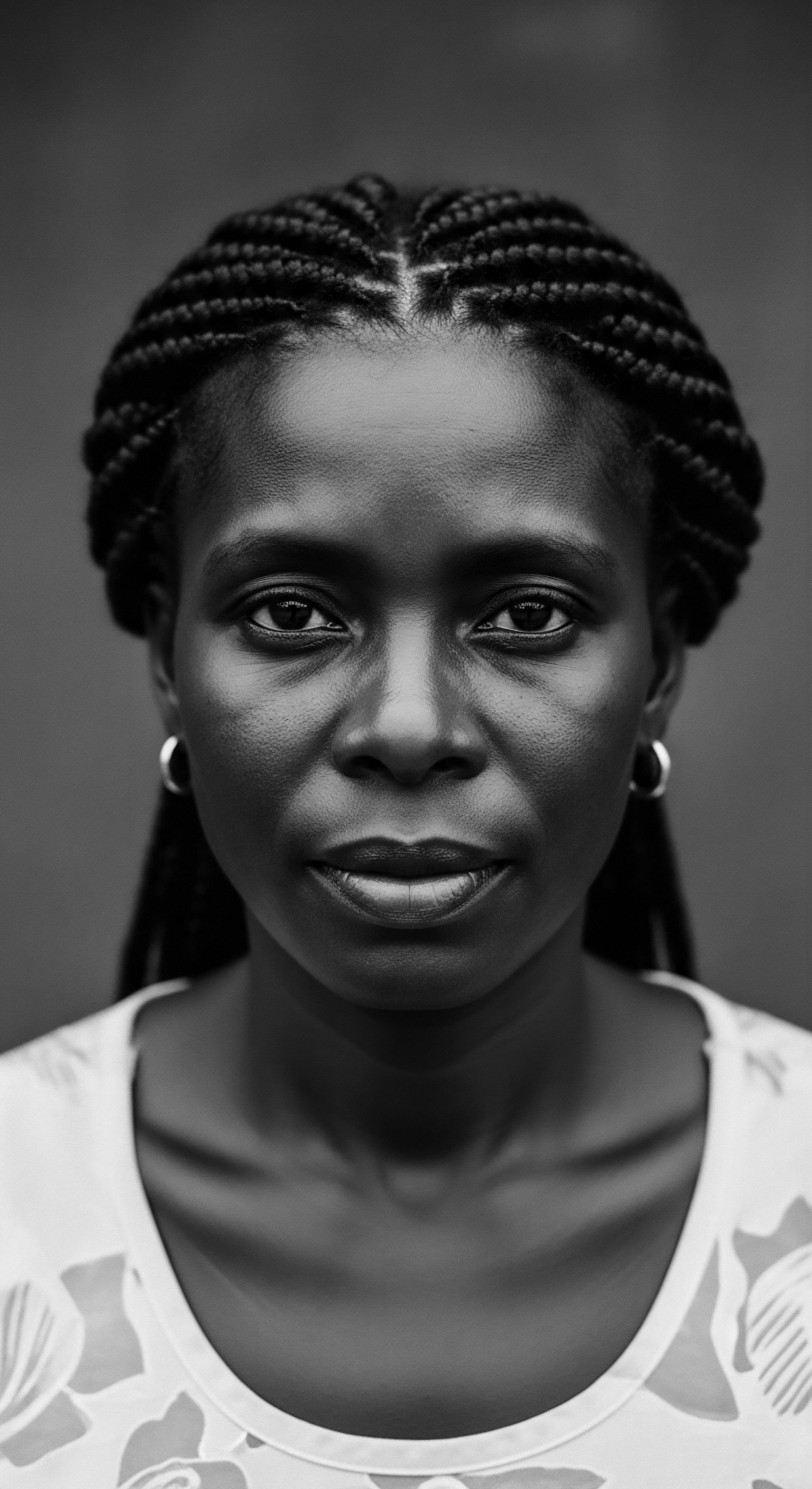
Intermediate
Moving beyond the foundational meaning, the Lipid Layer emerges as a complex, dynamic system integral to the very character of hair, particularly for textured strands. This section deepens the exploration, focusing on the specific components of this protective barrier and how its unique composition in textured hair shapes its properties and care requirements. The Lipid Layer is not a monolithic entity; it is a meticulously organized arrangement of various lipid classes, each contributing to the hair’s defense against moisture loss and external aggressors.
The outermost surface of the hair cuticle is adorned with a covalently bound lipid, 18-Methyleicosanoic Acid (18-MEA), a unique fatty acid that is essential for the hair’s natural hydrophobicity and smooth feel. Beyond this bound layer, a mixture of free lipids, including fatty acids, ceramides, and cholesterol, resides within and between the cuticle cells, forming an intercellular cement. This intricate architecture allows the Lipid Layer to regulate water movement, providing both a barrier and a pathway for beneficial substances. The presence and organization of these lipids directly influence the hair’s elasticity, strength, and its capacity to retain moisture.

The Architecture of Protection ❉ Beyond the Surface
The Lipid Layer’s true meaning extends into the very structural integrity of the hair. Its components, while seemingly small, collectively form a formidable barrier. The 18-MEA, being covalently linked, provides a durable, water-repellent surface.
Beneath this, the free lipids within the Cell Membrane Complex (CMC) act as a kind of cellular glue, holding the cuticle cells together and contributing to the hair’s mechanical properties. When this layer is compromised, through mechanical stress, chemical treatments, or environmental exposure, the hair becomes vulnerable, leading to increased porosity, dryness, and susceptibility to breakage.
For textured hair, the challenges are often amplified. The natural bends and twists in coily and curly strands mean that the cuticle scales, which are the outermost protective layer, are not always uniformly aligned. This unevenness can create areas of vulnerability, making the Lipid Layer’s role even more critical. The inherent structure of textured hair means it is often more prone to losing moisture, making the preservation and replenishment of its lipid barrier a constant, vital act of care.
The Lipid Layer’s complex architecture, with its bound and free lipids, is a cornerstone of hair resilience, especially for textured strands.
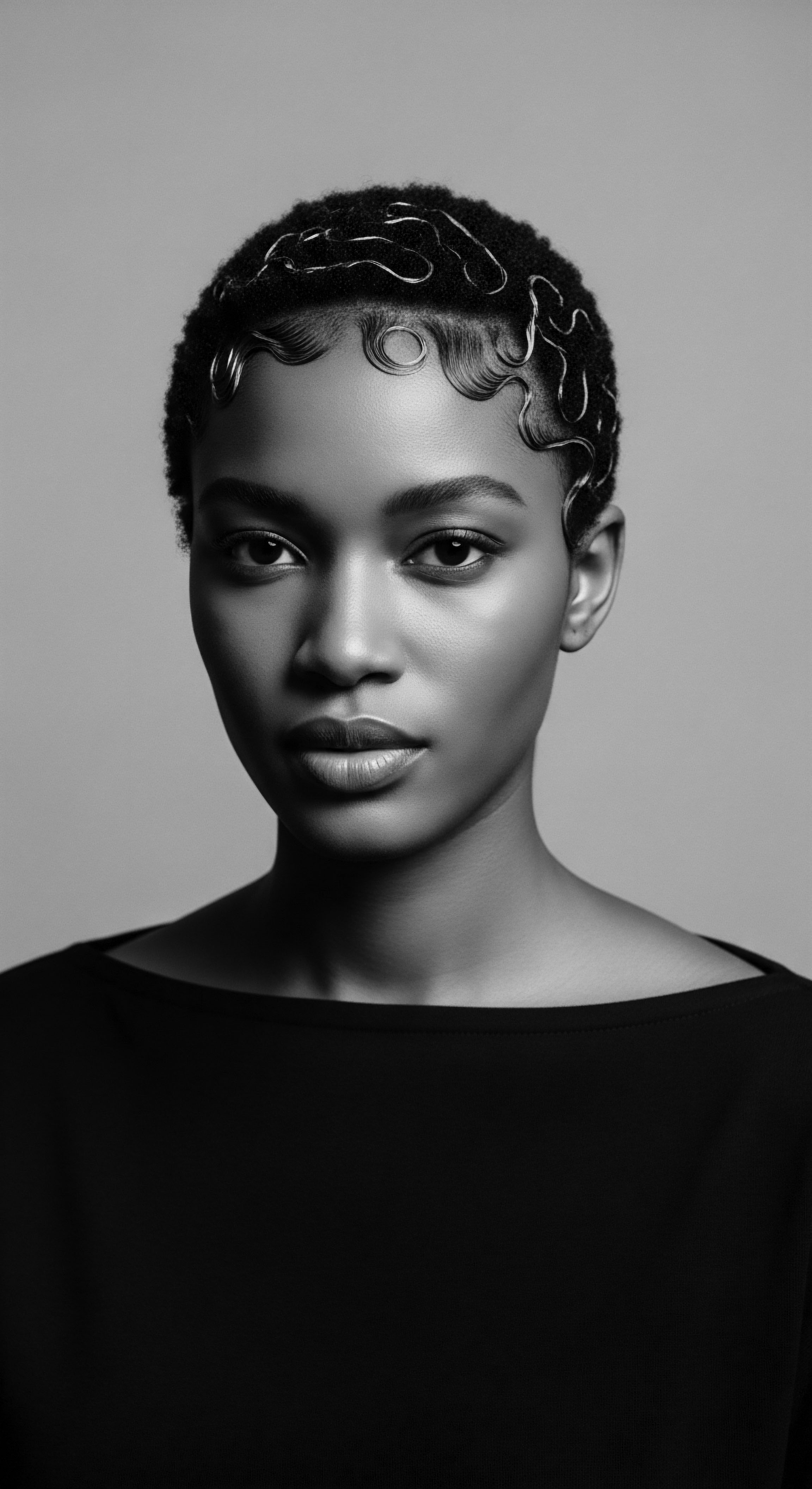
The Tender Thread ❉ Ancestral Care and Modern Validation
Generations past, without the aid of electron microscopes, instinctively understood the need to seal and protect textured hair. The traditional practices of oiling, buttering, and protective styling were, in essence, sophisticated methods of supporting the Lipid Layer. These ancestral rituals, often communal and deeply spiritual, were not merely cosmetic but profoundly restorative, preserving the hair’s health and its symbolic power within the community.
For instance, the use of natural butters like Cocoa Butter or Mango Butter, alongside various plant oils, served to coat the hair strands, mimicking and reinforcing the natural lipid barrier. These applications reduced friction between strands, minimizing mechanical damage and preventing moisture evaporation. The careful braiding and twisting of hair into styles like cornrows or Bantu knots, often after applying these emollients, further sealed the hair, creating a physical barrier that protected the delicate ends and lengths from environmental stressors.
The knowledge held within these practices is a testament to an enduring legacy of care. Consider the communal wash days in many African and diasporic communities, where the process of cleansing was followed by the meticulous application of nourishing agents. This ritualistic approach underscored the belief that hair care was a holistic endeavor, connecting physical wellbeing with cultural identity.
| Traditional Practice Hair Oiling Rituals |
| Key Ingredients (Ancestral) Shea butter, coconut oil, argan oil, olive oil |
| Lipid Layer Connection Replenishes surface lipids, reduces friction, enhances hydrophobicity, seals moisture. |
| Traditional Practice Protective Styling (Braids, Twists) |
| Key Ingredients (Ancestral) Applied with butters/oils, often with herbs |
| Lipid Layer Connection Physical barrier against environmental damage, minimizes mechanical stress, locks in applied lipids. |
| Traditional Practice Herbal Rinses/Masks |
| Key Ingredients (Ancestral) Fenugreek, hibiscus, aloe vera (often infused in oils) |
| Lipid Layer Connection Provides nutrients, soothes scalp, and when combined with oils, aids lipid distribution. |
| Traditional Practice These practices, honed over generations, demonstrate an intuitive understanding of the hair's need for lipid protection and moisture retention. |
This deep cultural understanding of hair care is not merely anecdotal. Modern scientific research has begun to affirm the efficacy of these ancestral methods. The very structure of textured hair, with its higher curvature and often more open cuticle, benefits immensely from the protective and sealing qualities of lipids. The continuous application of oils and butters helps to smooth down cuticle scales, reducing snagging and breakage, and thereby preserving the integrity of the Lipid Layer.
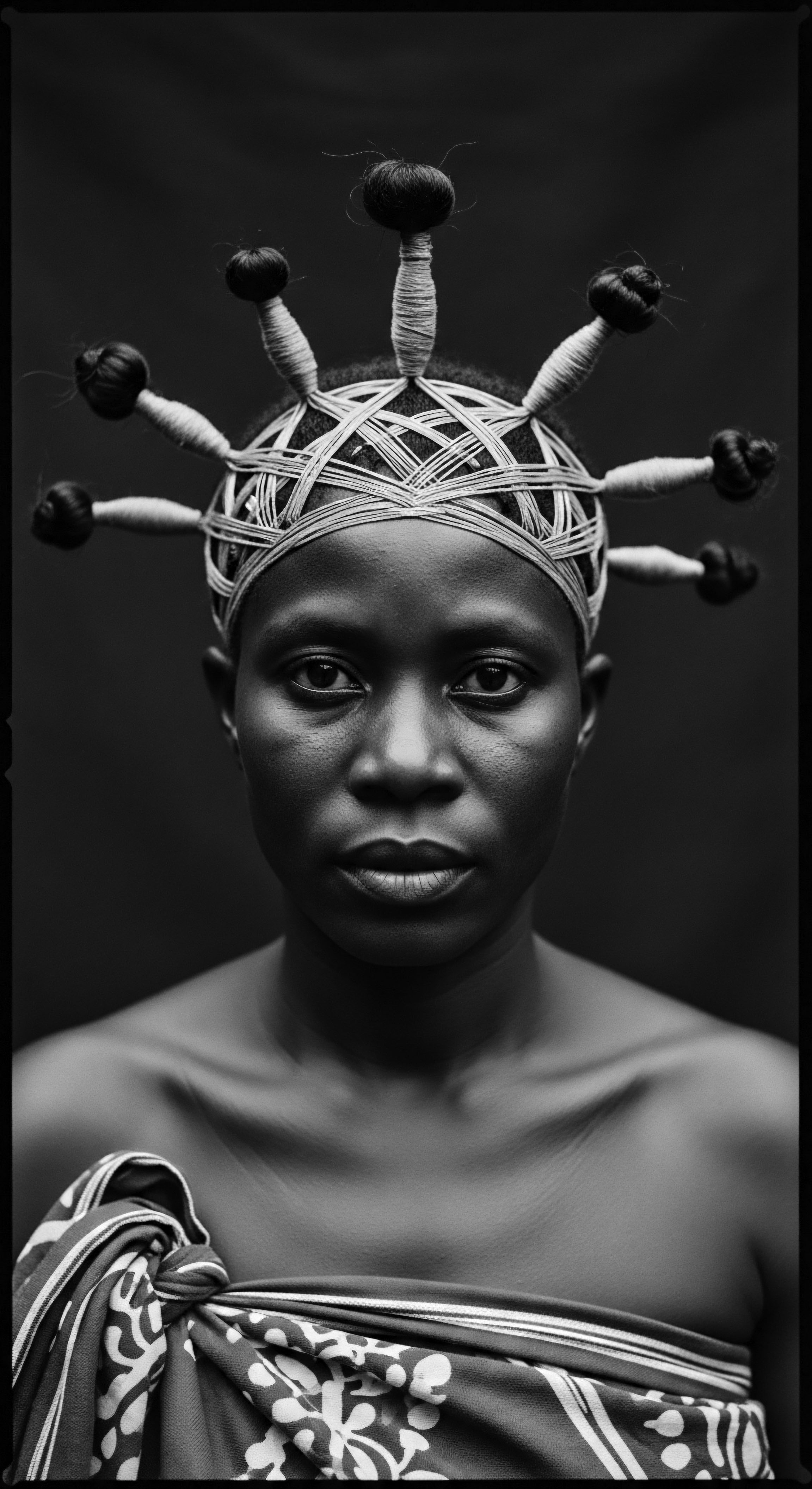
Academic
The Lipid Layer, from an academic vantage point, represents a sophisticated biological barrier, a critical determinant of hair fiber properties, and a focal point for understanding the distinct characteristics and care requirements of textured hair. Its precise meaning extends beyond a simple coating, encompassing a complex interplay of endogenous and exogenous lipids that govern the hair’s interaction with its environment, its mechanical resilience, and its overall health. This comprehensive examination delves into the biochemical composition, structural organization, and functional significance of the Lipid Layer, with particular emphasis on its unique implications for Black and mixed-race hair experiences, drawing upon rigorous scientific inquiry and historical context.
At the heart of the Lipid Layer’s functionality lies a precise arrangement of lipid species. The outermost region of the hair fiber, the epicuticle, is adorned with a covalently bound lipid, primarily 18-Methyleicosanoic Acid (18-MEA). This lipid, constituting a significant portion of the hair’s surface lipids, provides the primary hydrophobic character to the hair, minimizing water absorption and facilitating friction reduction. Beneath this external boundary, within the intercellular spaces of the cuticle and even extending into the cortex, resides a diverse array of free lipids.
These include fatty acids, cholesterol, and ceramides, which collectively form the Cell Membrane Complex (CMC), a crucial component for cell cohesion and the regulation of molecular transport across the hair fiber. The structural integrity and functional efficacy of the Lipid Layer are paramount for maintaining the hair’s native state, influencing its shine, tactile feel, and resistance to damage.

Biochemical Delineation and Structural Imperatives
The Lipid Layer is not a static shield but a dynamic system, constantly interacting with internal biological processes and external environmental factors. Its composition is a meticulous balance of lipid classes, each with a specific role. The 18-MEA, being tethered to the protein matrix of the cuticle, establishes a durable, water-repellent surface.
This covalent attachment means it is less easily removed by washing or environmental exposure compared to free lipids. The free lipids, meanwhile, reside in a more fluid, organized bilayer within the CMC, contributing to the flexibility and cohesion of the cuticle cells.
Alterations to this delicate balance, whether through chemical processing (e.g. coloring, relaxing), excessive heat styling, or environmental stressors (e.g. UV radiation), can compromise the Lipid Layer.
Damage to the 18-MEA layer leads to increased hydrophilicity, making the hair more prone to swelling, tangling, and breakage. Disruption of the free lipids within the CMC weakens the intercellular adhesion, causing cuticle lifting and further exposing the inner cortex to damage.
Consider the profound implications for textured hair. The helical and elliptical cross-sectional shape of many Black and mixed-race hair strands inherently presents a more tortuous path for the Lipid Layer to cover uniformly. This morphology can result in areas where the cuticle scales are lifted or less tightly bound, creating points of vulnerability. This structural reality often means textured hair, despite potentially having a higher overall lipid content, experiences challenges with moisture retention and perceived dryness.
The Lipid Layer’s composition and integrity are intrinsically linked to hair’s resilience, particularly for textured hair, where structural nuances demand meticulous care.
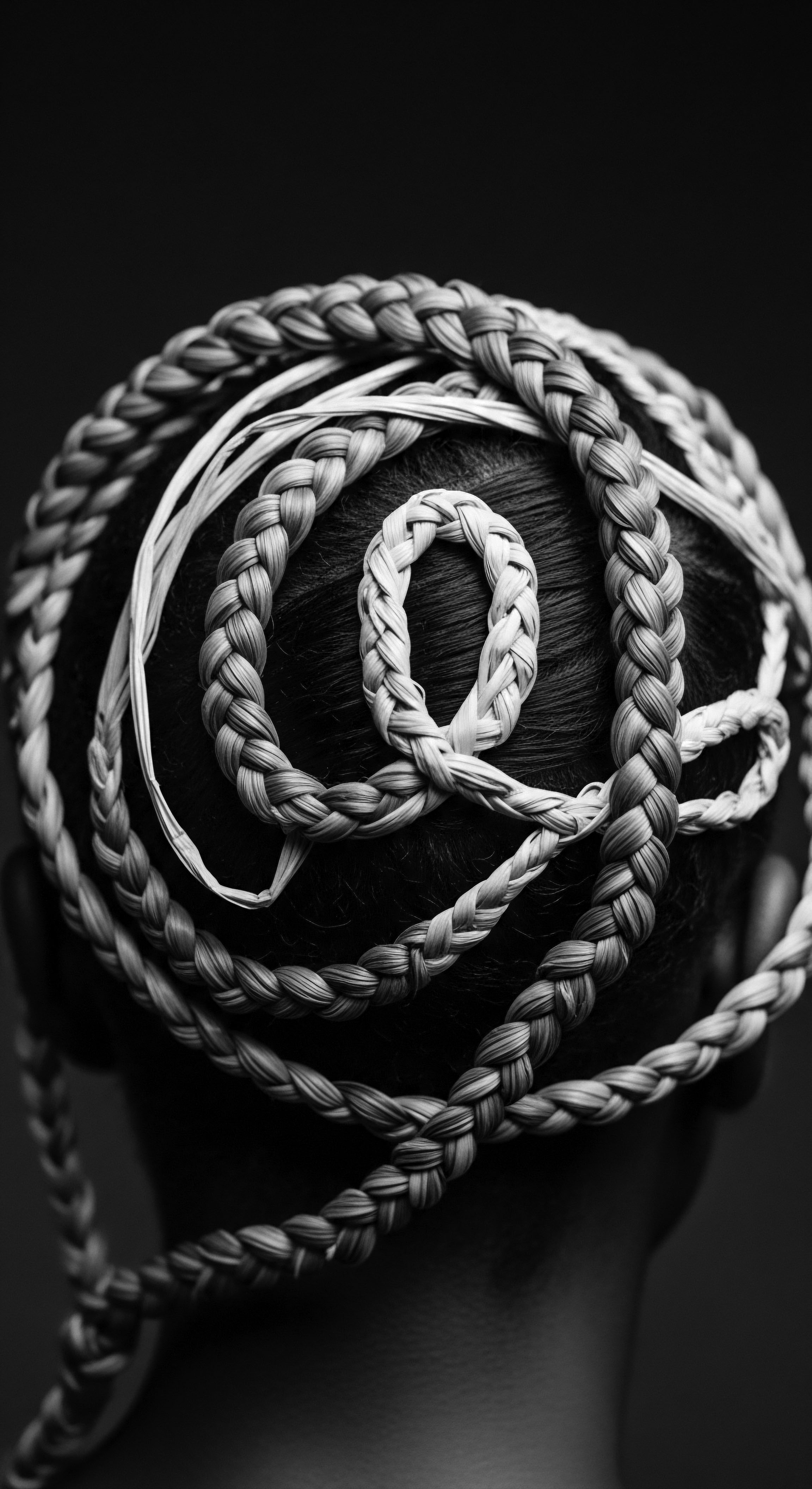
Ancestral Insights and Contemporary Affirmations ❉ A Shared Understanding
The ancestral wisdom of Black and mixed-race communities, spanning continents and centuries, intuitively understood the vital role of the Lipid Layer in maintaining hair health, even without the precise scientific nomenclature. Traditional practices of oiling, buttering, and sealing hair were, in essence, sophisticated applications of exogenous lipids to supplement and protect the hair’s natural barrier. These rituals, often communal and deeply spiritual, underscored a profound connection between hair care and overall wellbeing.
A compelling body of research now validates these ancestral insights, particularly concerning the unique lipid profile of Afro-textured hair. Studies indicate that Afro-Textured Hair Often Exhibits the Highest Overall Lipid Content Compared to European and Asian Hair Types, with Quantities Estimated to Be 2.5 and 3.2 Times Higher, Respectively, Than European and Asian Hair (MDPI, 2023). Despite this higher lipid content, Afro-textured hair is frequently characterized by dryness and fragility, attributed to its distinct structural characteristics, such as its curvature and spiral follicles, which create points of weakness and increased susceptibility to breakage. This apparent paradox underscores the nuanced relationship between lipid quantity, lipid organization, and hair permeability in textured hair.
The lipids in Afro-textured hair often exhibit a lower order bilayer, leading to increased permeability to water despite the higher overall lipid content. This higher permeability means water can enter and leave the hair fiber more readily, contributing to perceived dryness and the need for consistent moisture retention strategies.
This scientific finding resonates deeply with the historical emphasis on oiling and protective styling in Black hair traditions. The perceived dryness was not a lack of internal lipids, but a consequence of their disordered arrangement and the hair’s structural propensity for water loss. Thus, the ancestral use of rich, occlusive agents like shea butter or castor oil was a pragmatic response, aiming to create an external, ordered lipid barrier that compensated for the inherent permeability and minimized moisture evaporation.
- The Role of Exogenous Lipids in Traditional Care ❉ Historical texts and ethnographic accounts frequently detail the application of plant-based oils and butters. These substances, rich in fatty acids and other lipids, provided a supplementary protective layer, reducing the friction between individual hair strands and minimizing mechanical damage. This practice served as a direct intervention to reinforce the hair’s natural Lipid Layer.
- Impact on Water Dynamics ❉ The higher permeability of Afro-textured hair, linked to its lipid organization, meant that traditional care practices had to focus on sealing moisture within the hair fiber. This was achieved through the layering of emollients and the use of styles that encapsulated the hair, such as intricate braids or wrapped styles, thereby slowing down the rate of water diffusion.
- The Significance of Collective Care ❉ Hair care in many African and diasporic communities was a communal act, often involving multiple individuals. This shared experience reinforced the importance of meticulous, consistent care, ensuring that the Lipid Layer was regularly nourished and protected, thereby contributing to the hair’s health and its symbolic value within the community.
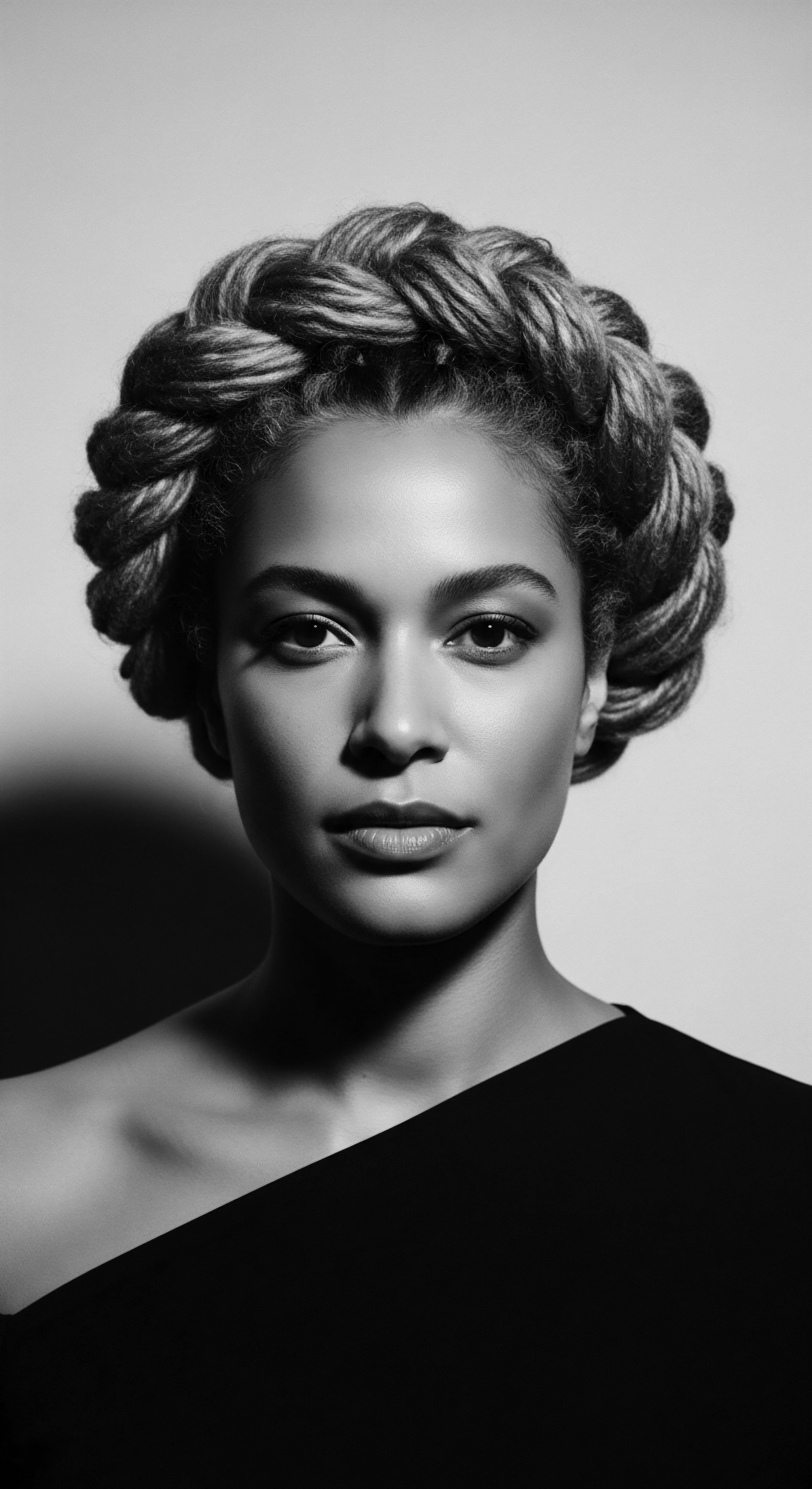
Interconnected Incidences and Long-Term Consequences
The understanding of the Lipid Layer’s role in textured hair extends into critical discussions about hair health, societal perceptions, and the economics of care. The inherent structural differences, coupled with the unique lipid characteristics, have historically led to a mischaracterization of textured hair as inherently “dry” or “brittle.” This perception, often perpetuated by Eurocentric beauty standards, overlooked the biological nuances and the efficacy of traditional care methods.
The long-term consequences of neglecting the Lipid Layer in textured hair are significant. Chronic dryness, increased breakage, and reduced elasticity can lead to thinning and impede length retention. This has not only physical implications for hair health but also profound psychological and cultural effects.
For generations, Black individuals faced societal pressures to alter their natural hair textures, often through harsh chemical processes that further stripped the Lipid Layer and compromised hair integrity. The meaning of hair became intertwined with acceptance and identity, creating a complex landscape of self-perception.
| Hair Type Afro-textured Hair |
| Lipid Content & Order Highest overall lipid content, but often disordered bilayer |
| Permeability to Water Higher diffusion coefficient, more permeable |
| Traditional Care Response Emphasis on occlusive oils/butters, protective styles to seal moisture |
| Hair Type Caucasian Hair |
| Lipid Content & Order Lower total lipid content, more ordered bilayer |
| Permeability to Water Lower diffusion coefficient, less permeable |
| Traditional Care Response Focus on conditioning, less on heavy sealing; higher hydration levels |
| Hair Type Asian Hair |
| Lipid Content & Order Lowest total lipid content, highly ordered bilayer |
| Permeability to Water Resistant to hydration changes, lowest permeability |
| Traditional Care Response Often less emphasis on heavy products, focus on strength and shine |
| Hair Type Understanding these variations is crucial for developing culturally attuned and scientifically informed hair care strategies that honor each hair type's unique needs. |
The resurgence of the natural hair movement, deeply rooted in a reclamation of Black identity and heritage, has brought renewed attention to the Lipid Layer. This movement advocates for practices that support the hair’s natural state, often drawing from ancestral knowledge of oils, butters, and gentle handling. The focus shifts from altering hair texture to nurturing its intrinsic qualities, with the Lipid Layer playing a central role in this holistic approach. This cultural awakening is supported by scientific advancements that now provide a deeper understanding of the unique lipid dynamics in textured hair, bridging the gap between traditional wisdom and modern trichology.
The Lipid Layer’s significance thus extends beyond mere biology; it becomes a symbol of resilience, a testament to inherited wisdom, and a focal point for contemporary discussions on beauty, identity, and wellness within the context of textured hair heritage. Its study offers a pathway to not only improved hair health but also a richer appreciation for the diverse and enduring legacy of hair care practices across the African diaspora.

Reflection on the Heritage of Lipid Layer
The journey through the meaning and significance of the Lipid Layer, from its elemental biology to its profound resonance within the heritage of textured hair, concludes not with an endpoint, but with an open vista. It is a continuous narrative, an enduring dialogue between the wisdom of our ancestors and the illuminating insights of modern science. The Lipid Layer, in its quiet, unassuming presence on each strand, embodies the very ‘Soul of a Strand’ ethos—a testament to the deep, intrinsic value of textured hair and its historical journey.
From the sun-drenched landscapes of ancient Africa, where meticulous hair care rituals were acts of reverence and community building, to the contemporary spaces where Black and mixed-race individuals reclaim and celebrate their natural coils and curls, the Lipid Layer has been an unseen protagonist. It has been the silent recipient of nourishing butters, the beneficiary of careful braiding, and the subject of intuitive practices designed to preserve its delicate balance. These ancestral methods, born from observation and necessity, whisper across time, affirming a profound understanding of hair’s needs.
The recognition that Afro-textured hair, despite its often higher lipid content, faces unique challenges in moisture retention due to its lipid organization, offers a powerful connection between historical practice and scientific validation. Our forebears, through their consistent application of emollients, were not merely moisturizing; they were actively fortifying a barrier, intuitively responding to a biological reality that science would later delineate. This deep-seated knowledge, passed through generations, represents a living archive of care, resilience, and beauty.
The Lipid Layer stands as a reminder that the path to optimal hair health for textured strands is not found in a singular discovery, but in a harmonious blend of inherited wisdom and informed scientific application. It invites us to honor the hands that first massaged oils into scalps, the communal gatherings where braids were woven, and the enduring spirit that saw hair not just as fiber, but as a vibrant extension of identity and heritage. This understanding allows us to appreciate the unbroken lineage of care, reminding us that every strand carries the echoes of a rich and resilient past, guiding us toward a future of holistic, heritage-centered wellness.
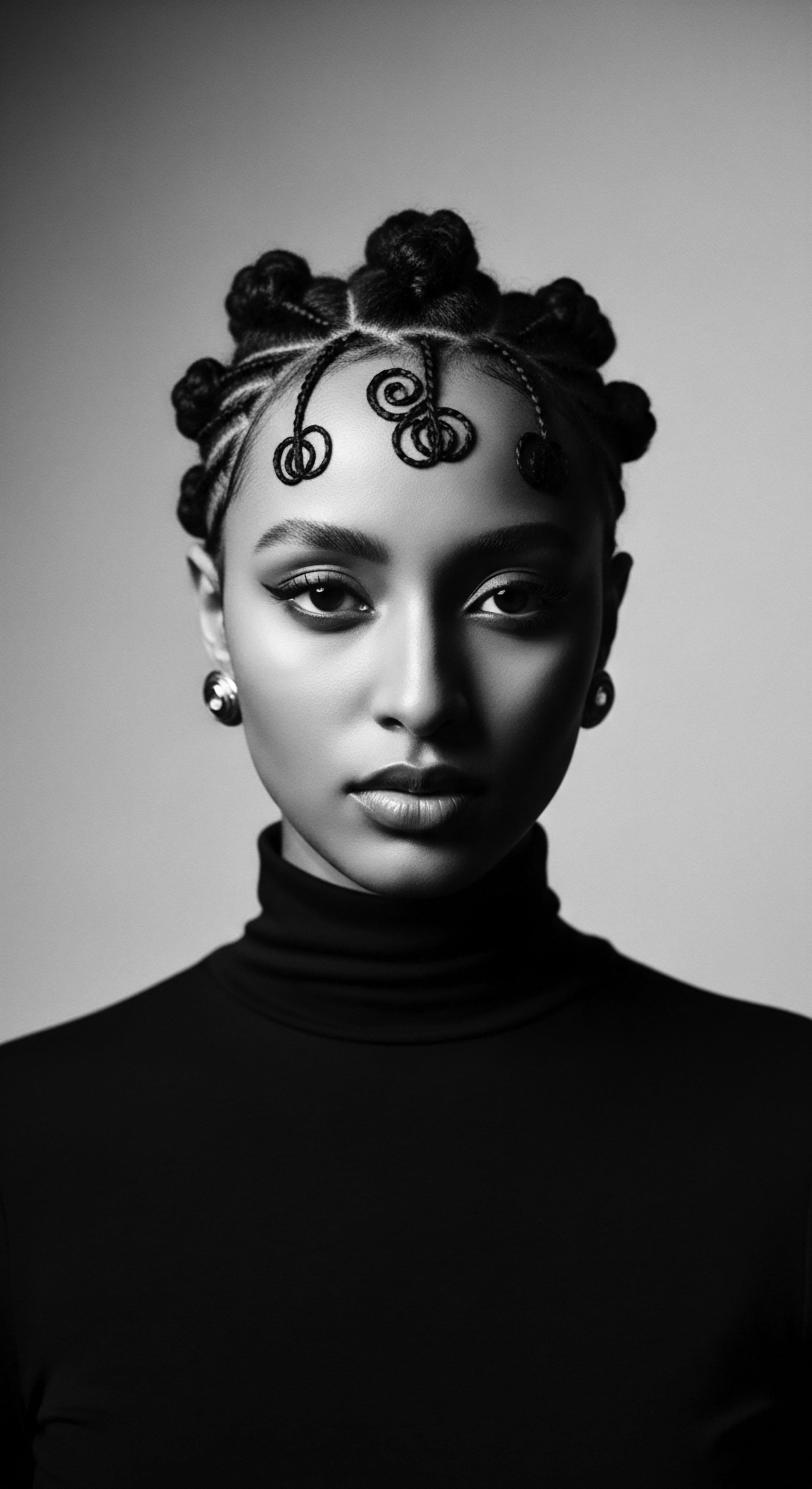
References
- Byrd, A. D. & Tharps, L. L. (2014). Hair Story ❉ Untangling the Roots of Black Hair in America. St. Martin’s Griffin.
- Dabiri, E. (2019). Twisted ❉ The Tangled History of Black Hair Culture. HarperCollins.
- Kedi, C. (2015). Beautifying the Body in Ancient Africa and Today. Kedia Books.
- Martí, M. Barba, C. Manich, A. M. Rubio, L. Alonso, C. & Coderch, L. (2015). The influence of hair lipids in ethnic hair properties. International Journal of Cosmetic Science, 38(1), 77-84.
- Oliver, M. A. Coderch, L. Carrer, V. Barba, C. & Marti, M. (2020). Ethnic hair ❉ Thermoanalytical and spectroscopic differences. Skin Research and Technology, 26(2), 263-271.
- Tarlo, E. (2017). Entanglement ❉ The Secret Lives of Hair. Oneworld Publications.
- Tshiki, N. A. (2021). African Hairstyles – The “Dreaded” Colonial Legacy. The Gale Review.
- Waldstein, A. (2016). Spiritual hair ❉ dreadlocks and the bodies multiple in Rastafari. Journal for the Study of Religious Experience, 2(1), 71-86.
- Wang, S. Li, Y. Zhu, H. & Zhou, L. (2023). The Genomic Variation in Textured Hair ❉ Implications in Developing a Holistic Hair Care Routine. Cosmetics, 10(3), 85.
- Wood, M. & Leyden, M. (2023). Chemistry of Wellness ❉ Hair and Hair Care. UVA ChemSciComm.
